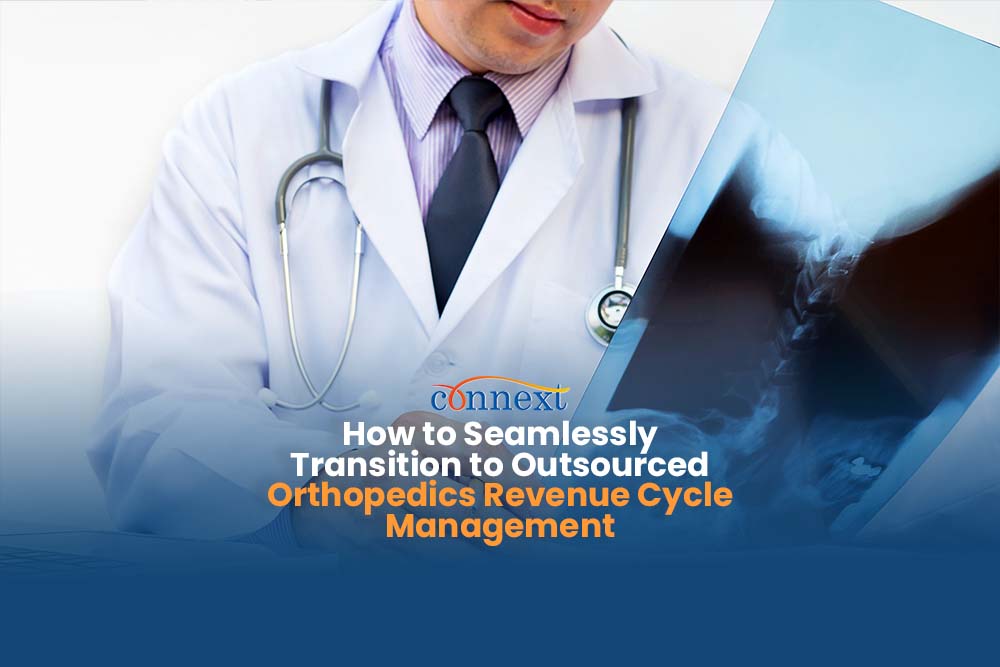Revenue cycle management (RCM) is a critical part of the healthcare industry, and it’s especially important for hospitals specializing in orthopedics. With the complexity of billing and coding, many hospitals are now considering outsourcing their RCM to experts. However, the transition from in-house RCM to outsourced solutions can be challenging. In this article, we’ll provide hospitals with a step-by-step guide on how to smoothly transition to outsourced orthopedics revenue cycle management.

Photo by jcomp
Why outsource orthopedics revenue cycle management?
Before we delve into the transition process, let’s discuss why outsourcing orthopedics RCM is beneficial for hospitals. Outsourcing RCM allows hospitals to:
1. Keep pace with healthcare innovations
Healthcare is a realm of perpetual evolution. From ever-changing insurance policies to dynamic coding updates, the landscape demands relentless adaptation. Hospitals, particularly those with specialized departments like orthopedics, grapple with the dual challenges of ensuring efficient operations while staying compliant. Outsourcing RCM brings numerous advantages to the table. RCM partners are equipped to deal with complex healthcare regulations, translating them into actionable strategies that streamline billing, coding, and claims submissions for orthopedics procedures.
2. Gain knowledge from RCM experts
Orthopedics revenue cycle management presents a unique set of complexities. With intricate coding systems tailored to specific procedures, a misstep in coding can lead to denied claims and revenue loss. Here, outsourcing offers hospitals a lifeline. Expert RCM providers specializing in orthopedics can easily handle billing intricacies, ensuring accurate coding that mitigates errors and accelerates reimbursements. The specialized knowledge they bring to the table becomes a valuable asset in the hospital’s revenue optimization.
3. Get access to RCM technology
The convergence of expertise and technology highlights the advantages of outsourcing. Hospitals often grapple with the need for in-house talent, software, and training to manage RCM efficiently. Outsourcing not only relieves hospitals of these resource burdens but also brings advanced technological tools to the forefront. Analytics-driven solutions help identify bottlenecks in the revenue cycle, leading to proactive interventions that optimize revenue capture. This synergy of human expertise and cutting-edge technology positions hospitals to thrive amidst complexity.
4. Balance cost-efficiency and quality
The cost-efficiency of outsourcing RCM is a critical consideration. Hospitals are compelled to allocate substantial resources to maintaining in-house RCM teams and infrastructure. Outsourcing introduces a tremendous benefit, significantly reducing overhead costs. Yet, this pursuit of cost savings does not compromise on quality. Outsourcing providers are incentivized to deliver superior accuracy, as their revenue is directly tied to the hospital’s financial performance. This dynamic strikes a harmonious balance between financial prudence and uncompromised quality.
5. Focus on patient care
One of the most profound outcomes of RCM outsourcing is that it allows hospital personnel to focus on what matters most: patient care. The intricate processes of billing, coding, and claims management can be time-consuming and divert valuable resources from delivering exceptional healthcare. Outsourcing RCM alleviates this burden, allowing hospital staff to channel their energy towards elevating patient experiences, fostering a culture of care, and building stronger patient-provider relationships.
Now, let’s dive into the step-by-step guide.
Step 1: Conduct a cost-benefit analysis
Before making any decisions, it’s essential to conduct a cost-benefit analysis. This analysis should include an evaluation of the current in-house RCM process’s strengths and weaknesses. Hospitals should also consider the costs associated with outsourcing RCM and compare them with the costs of maintaining an in-house team.
Step 2: Identify potential providers
Once hospitals have decided to outsource their orthopedics revenue cycle management, they must start searching for potential providers. They should consider various factors when selecting a provider, such as:
– Experience and expertise
– Reputation
– References
– Pricing
– Communication and responsiveness
Step 3: Plan for the transition
After selecting a provider, hospitals should begin planning for the transition. This step includes developing a timeline, identifying key stakeholders, and outlining roles and responsibilities.
Step 4: Communicate with staff and patients
Transitioning to outsourced RCM can be a significant change for staff and patients. Hospitals or any other healthcare facility must communicate the change effectively to avoid any confusion or miscommunication. They should provide clear instructions on how the new process works and how it will impact staff and patients.
Step 5: Monitor performance
Once the transition is complete, hospitals should monitor the performance of their outsourced orthopedics RCM provider continually. This monitoring includes regular check-ins, evaluations, and reporting.
Potential challenges and best practices
Transitioning to outsourced orthopedics RCM can present several challenges. Any healthcare facility intent on going through the process must consider these challenges when planning for the transition. Some potential challenges include:
– Resistance from staff
– Integration with existing systems
– Loss of control over the RCM process
To overcome these challenges, hospitals must follow best practices such as:
– Involving the staff in the decision-making process
– Choosing a provider that integrates with existing systems
– Maintaining open communication with the provider and monitoring performance regularly
Conclusion
In the realm of healthcare, where regulations shift like tides and the complexities of orthopedics billing demand finesse, outsourcing revenue cycle management emerges as a top solution that ensures stability and profitability. The specialized expertise, technology integration, and cost-efficient prowess of RCM outsourcing providers pave the way for hospitals to focus on what truly matters – nurturing health, enriching lives, and ensuring a resilient financial future.
Given all the benefits of outsourcing, hospitals need to do their due diligence and prepare for this big change. Transitioning to outsourced orthopedics revenue cycle management can be challenging but rewarding for hospitals in the long run. By following this step-by-step guide and best practices, hospitals can ensure a seamless transition that benefits both staff and patients.
Connext Global Solutions helps companies build custom, dedicated support teams in the Philippines. Learn more about Connext Global Solutions.
Connext Global Solutions provides Healthcare Outsourcing for healthcare and hospice organizations. If you need help with your orthopedic revenue cycle management, outsource RCM and other Healthcare services to Connext today.
Explore the benefits and strategies of transitioning to outsourced hospice revenue cycle management in our latest blog post, tailored for those in orthopedics seeking smooth and efficient financial operations.
Enhance your understanding of healthcare financial dynamics. Visit our blog to explore the impact of regulatory changes on dental revenue cycle management, offering valuable insights for a seamless transition to outsourced orthopedics revenue cycle management.









